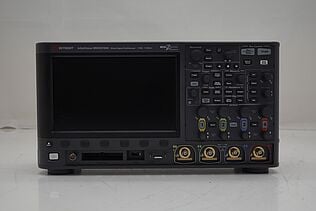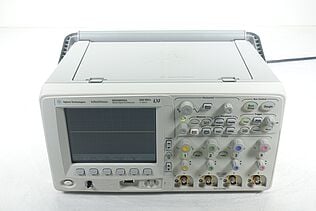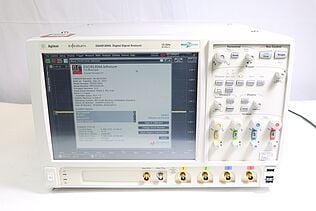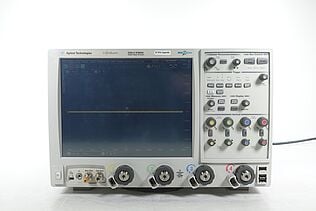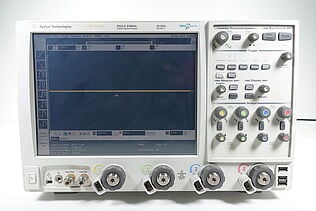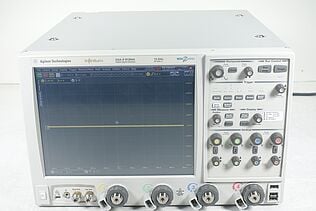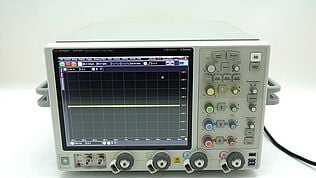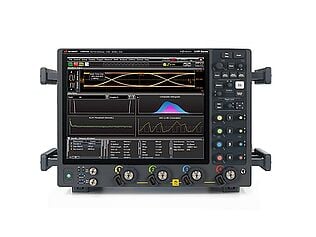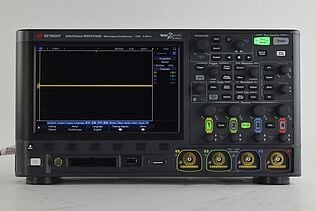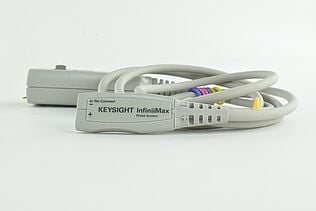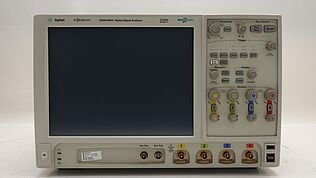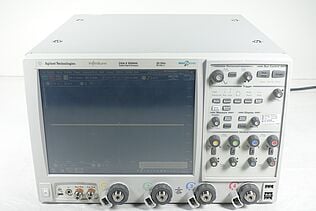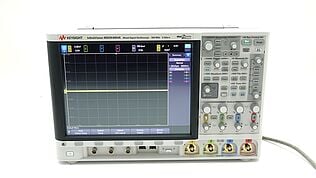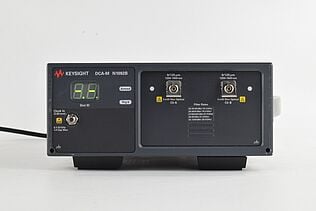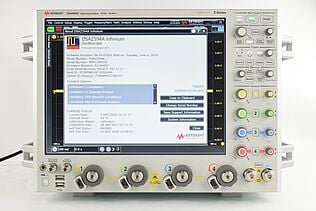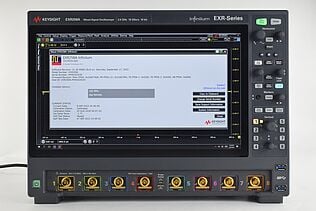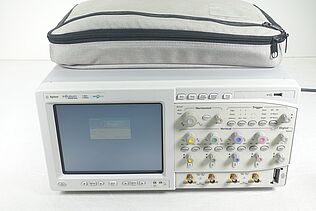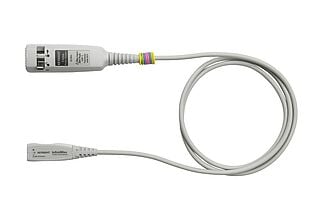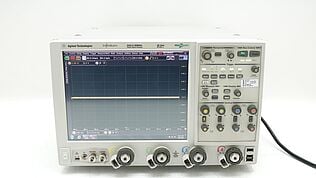Sign up to receive marketing or promotional emails from Keysight
This article is brought to you by the Keysight Used Equipment Store. The information applies to used and new equipment.
If you know which Keysight model is of interest to you and matches your technical requirements, visit the Used Equipment Store to see if you can save with our offers.
View Our Offers
For more Test and Measurement knowledge and tips, view all technical articles. Visit our resources
Keysight assumes no liability for the completeness, correctness and accuracy of all content on this website and all of its content. Please read here the terms of use of this website.
Article Feedback
Give us any feedback you might have about this article.
- Introduction
- Components of a Digital Storage Oscilloscope
- DSO Operating Modes
- Features of the InfiniiVision 4000 X-Series Digital Storage Oscilloscope
- DSO Trigger Modes
- Digital vs Analog Storage
- Digital Storage vs Other Types of Oscilloscope
- Common Terms Related to Digital Storage Oscilloscopes
- Popular Used Oscilloscopes
What is a Digital Storage Oscilloscope?
A digital storage oscilloscope (DSO) is an electronic instrument that measures and records electrical signals. It converts the analog signal into a digital format and stores it in its digital memory, allowing for easy recall and analysis.
Digital storage oscilloscopes are used in a variety of applications. Biomedical engineers use them to measure electrical signals from the human body, such as heartbeats and brainwaves. Telecommunications engineers use DSOs to test cell phones and other communication devices. Aerospace engineers use them to test aircraft components, while automotive engineers use them to test vehicle electronic systems. Design engineers use DSOs to verify the performance of their designs.
To find out more about Keysight Oscilloscopes, visit the Oscilloscope Basics page.
Buy Oscilloscopes at a Great Discount
- Model (A-Z)
- Model (Z-A)
- Lowest price
- Highest price
- Highest discount
- Newest first
- Oldest first
- Like-new Condition
- Updated Firmware
- Full Calibration
- New Accessories
- Like-new Warranty
- Customization possible
- Savings of up to 90%
- Working Condition
- Calibrated or Tested
- 30-Day Right-of-Return
- No Customization
- Shipping to limited countries





FAQs
Get answers to Frequently Asked Questions about Shipping, Payment, Quote Processes, Pricing, Stores, etc.


Work with Keysight
warranty
Enhance Software.
Local Team
for 80+ Years
Used Equipment
and Calibration













































































Select up to 3 instruments to compare
Enable Notifications
In order to use this feature, you need to enable notifications.
Manage notification preferences

 Used Oscilloscope Buying Guide For Electrical Engineers
Used Oscilloscope Buying Guide For Electrical Engineers
Download for Free With a Keysight Used Equipment Store Account
Components of a Digital Storage Oscilloscope
A digital storage oscilloscope typically has five main components:
Display
Vertical input channel
Horizontal input channel
Trigger
Analog-to-digital converter
The display is used to visualize the electrical signal being measured. The vertical input channel is used to measure the amplitude of the signal, while the horizontal input channel is used to measure the signal's frequency. The trigger is used to start and stop the measurement process.
DSO Operating Modes
Digital storage oscilloscopes have two operating modes: single-shot and repetitive.
In single-shot mode, the oscilloscope acquires and stores one signal. In repetitive mode, the oscilloscope continuously acquires and stores signals.
Features of the InfiniiVision 4000 X-Series Digital Storage Oscilloscope
16-bit vertical resolution
5 GSa/s max sample rate
20 M record length
1,000,000 wf/s update rate
2 or 4 analog channels plus 16 digital channels (MSO models)
Intuitive user interface with context-sensitive help
WaveGen arbitrary function generator (optional)
12.1-inch capacitive touch display (Optional on some models)
USB port and LAN connectivity
Free Keysight application software updates
The InfiniiVision 4000 X-Series features the highest performance in its class with up to 1.5 GHz bandwidth, 5 GSa/s sample rate, and 16 digital channels (MSO models). The InfiniiVision 4000 X-Series oscilloscopes offer the most advanced triggering capabilities with over 21 trigger types and modes. The 7-in-1 instrument also offers an optional built-in arbitrary function generator, digital voltmeter, and frequency counter.
To see a full up-to-date listing of Keysight Premium Used Oscilloscopes, visit the product listing page.
DSO Trigger Modes
A trigger is a condition that causes the oscilloscope to start acquiring and storing a signal. Triggers are used to ensure that the signal being measured is of interest and to prevent the oscilloscope from recording unwanted signals.
Advanced trigger modes are available in some digital oscilloscopes. They include delay, peak, and window triggers. These trigger modes allow the oscilloscope to start acquiring and storing a signal at a specific point in time, which can be useful for measuring transient phenomena.
| Trigger Mode | Description |
|---|---|
| Delay trigger mode | The trigger event must occur within a specified time after an initial trigger event. This mode is useful for capturing infrequent events or isolating pre-trigger and post-trigger events. |
| Peak trigger mode | Captures repetitive waveforms with varying amplitudes. The trigger level is set at a percentage of the peak-to-peak amplitude, and the scope triggers on the rising or falling edge closest to the trigger level. |
| Window trigger | The trigger event must occur within a specified time window. This mode is useful for capturing events that occur at specific times or for isolating pre-trigger and post-trigger events. |
Other trigger modes include:
Edge trigger
Pulse width
Video
Slope
Alternate
These trigger modes can be very helpful in capturing specific events or identifying problems.
Learn more about what each trigger mode does in our how-to-use-your-oscilloscope guide.

 Used Oscilloscope Buying Guide For Electrical Engineers
Used Oscilloscope Buying Guide For Electrical Engineers
Download for Free With a Keysight Used Equipment Store Account
Digital vs Analog Storage
DSOs have several advantages over their analog counterparts. Digital oscilloscopes:
Are more accurate and precise
Have a wider dynamic range
Can be easily connected to computers for storage and analysis.
Can measure very fast signals that would be difficult or impossible to measure with
an analog oscilloscope
Feature automatic measurements and analysis of acquired data
Digital Storage vs Other Types of Oscilloscope
Digital storage oscilloscopes (DSOs) are electronic instruments that convert the analog signal into a digital format and store it in memory, allowing for easy recall and analysis.
Read-out oscilloscopes do not store the electrical signal in memory. Instead, they display the signal in real-time on a screen. This makes read-out oscilloscopes best suited for monitoring purposes
Digital phosphor oscilloscopes (DPOs), like DSOs, also measure and record electrical signals. However, they do not store the signal in their memory. Instead, they use a cathode ray tube (CRT)* to display the signal in real-time on the screen
Single-shot oscilloscopes are instruments that measure and record electrical signals for a single event. They are commonly used in biomedical engineering, telecommunications, aerospace, and automotive engineering
Random spaced or equivalent time oscilloscopes are also used in biomedical engineering, telecommunications, aerospace, and automotive engineering. They measure and record electrical signals for single events
Browse Oscilloscopes at a Great Discount
- Model (A-Z)
- Model (Z-A)
- Lowest price
- Highest price
- Highest discount
- Newest first
- Oldest first
- Like-new Condition
- Updated Firmware
- Full Calibration
- New Accessories
- Like-new Warranty
- Customization possible
- Savings of up to 90%
- Working Condition
- Calibrated or Tested
- 30-Day Right-of-Return
- No Customization
- Shipping to limited countries





Stay Up to Date on Used Equipment!
Don’t miss special offers, news and announcements on the latest used equipment. Unsubscribe any time.


Work with Keysight
warranty
Enhance Software.
Local Team
for 80+ Years
Used Equipment
and Calibration














































































Select up to 3 instruments to compare
Enable Notifications
In order to use this feature, you need to enable notifications.
Manage notification preferences
Common Terms Related to Digital Storage Oscilloscopes
| Term | Explanation |
|---|---|
| Digital waveform memory | Stores digital data. Used in DSOs to store the electrical signals being measured |
| Clock drive circuits | Used to generate clock signals that are used to operate DSOs. Generates the timing signals that control the acquisition and storage of the electrical signal being measured |
| Digital filtering | A type of signal process that is used to remove unwanted frequencies from a signal. Used in DSOs to improve the measurement accuracy by removing noise and other unwanted signals |
| Repeatable measurements | Measurements that can be made repeatedly with the same results. This is possible with digital oscilloscopes because they can store the waveform being measured and recall it for further analysis |
| Memory depth | Measured in samples. The number of samples that can be stored in memory is constantly increasing. Modern digital oscilloscopes have memory depths approaching a billion samples. |
| Synchronverter | An electronic device that converts direct current (DC) to alternating current (AC). It is used to supply power to digital oscilloscopes. |
For a comprehensive oscilloscope glossary and to learn more about the function of oscilloscopes, check out the Oscilloscope Glossary.
*Cathode ray tubes (CRTs) are used in some oscilloscopes to display the electrical signal being measured. They use a beam of electrons to visualize the waveform on a screen.

Subscribe to Get Our Latest News, Updates, and Articles.
Popular Used Oscilloscopes
Keysight Used Oscilloscopes offers a wide range of industry leading pre-owened oscilloscopes, ranging from older generation Agilent oscilloscopes to the newest Keysight oscilloscope models. So whether you are a fist time buyer, replacing a model like-for-like or looking for upgrade – we have something for you.
This article is brought to you by the Keysight Used Equipment Store. The information applies to used and new equipment.
If you know which Keysight model is of interest to you and matches your technical requirements, visit the Used Equipment Store to see if you can save with our offers.
View Our Offers
For more Test and Measurement knowledge and tips, view all technical articles. Visit our resources
Keysight assumes no liability for the completeness, correctness and accuracy of all content on this website and all of its content. Please read here the terms of use of this website.


